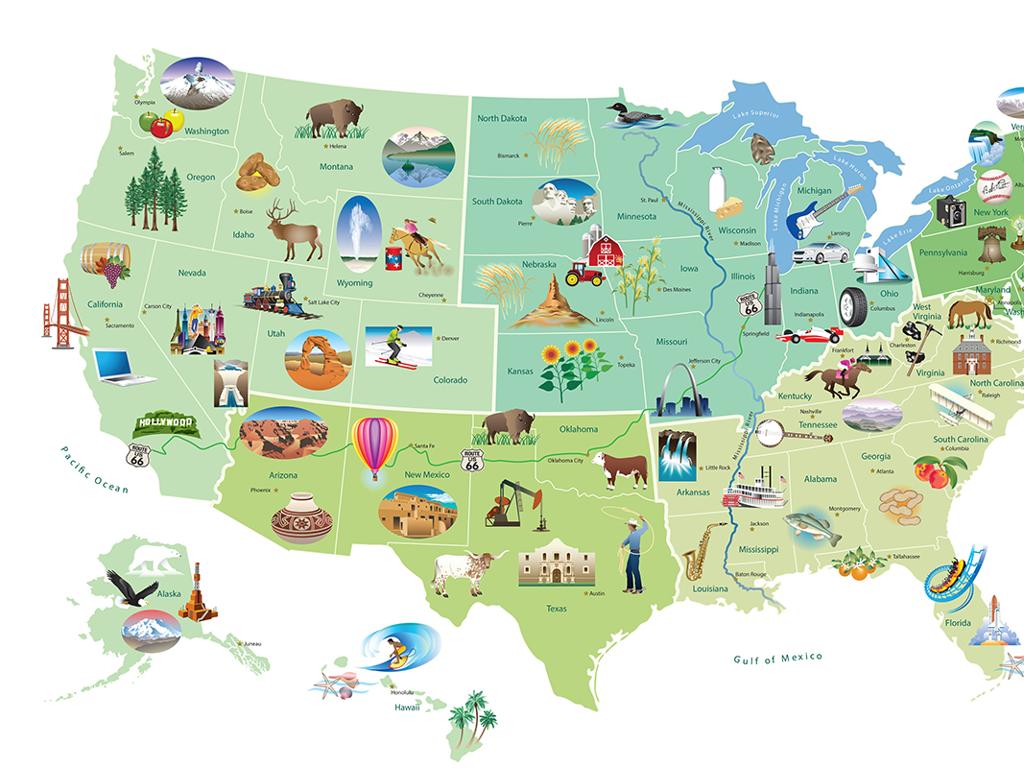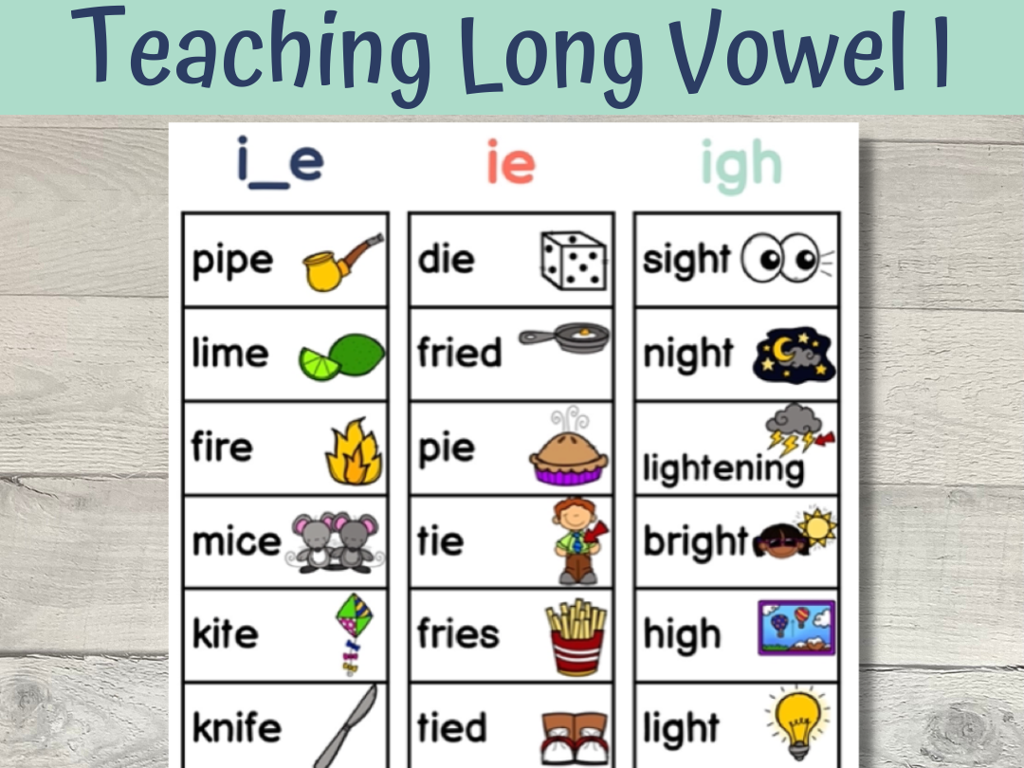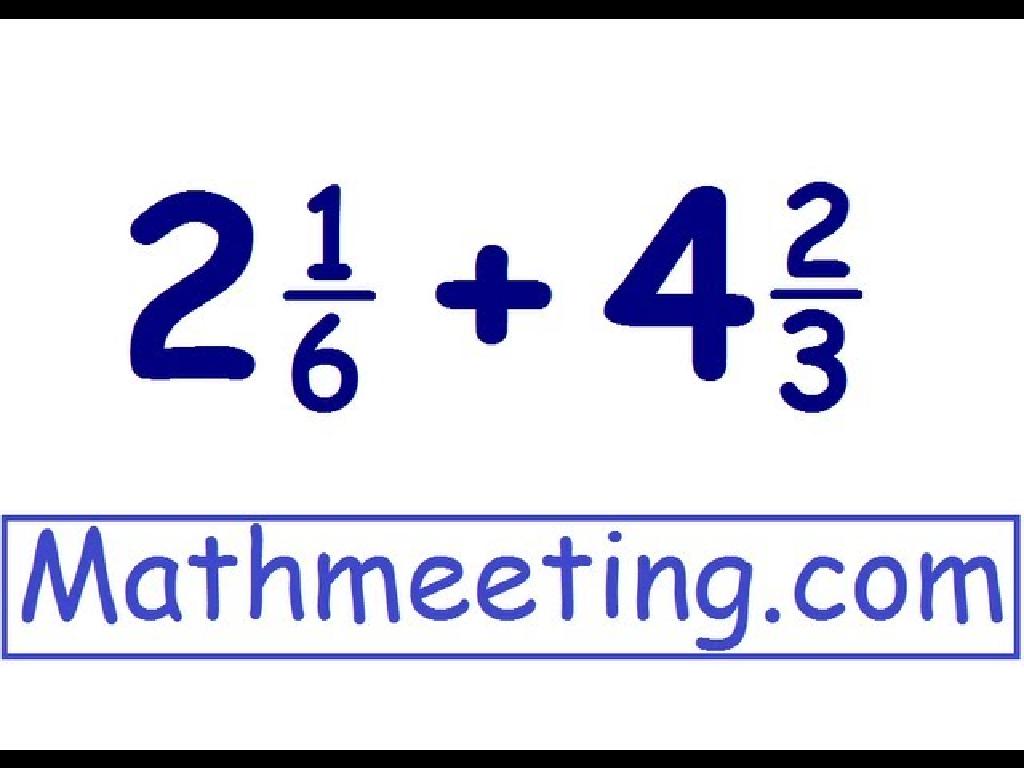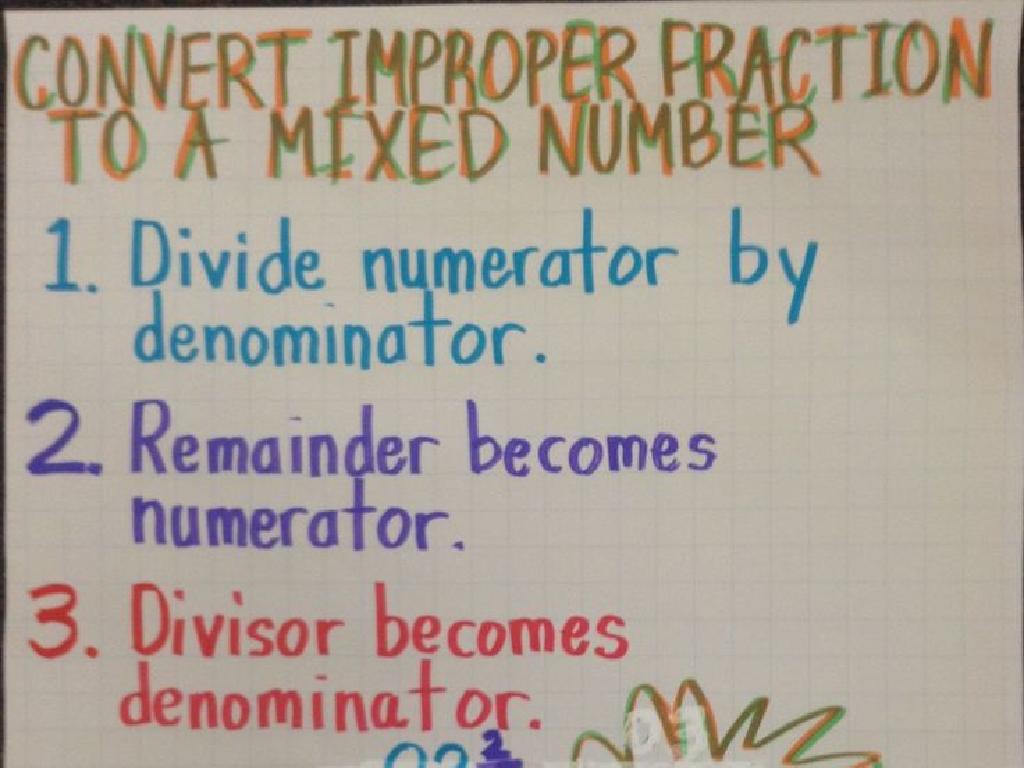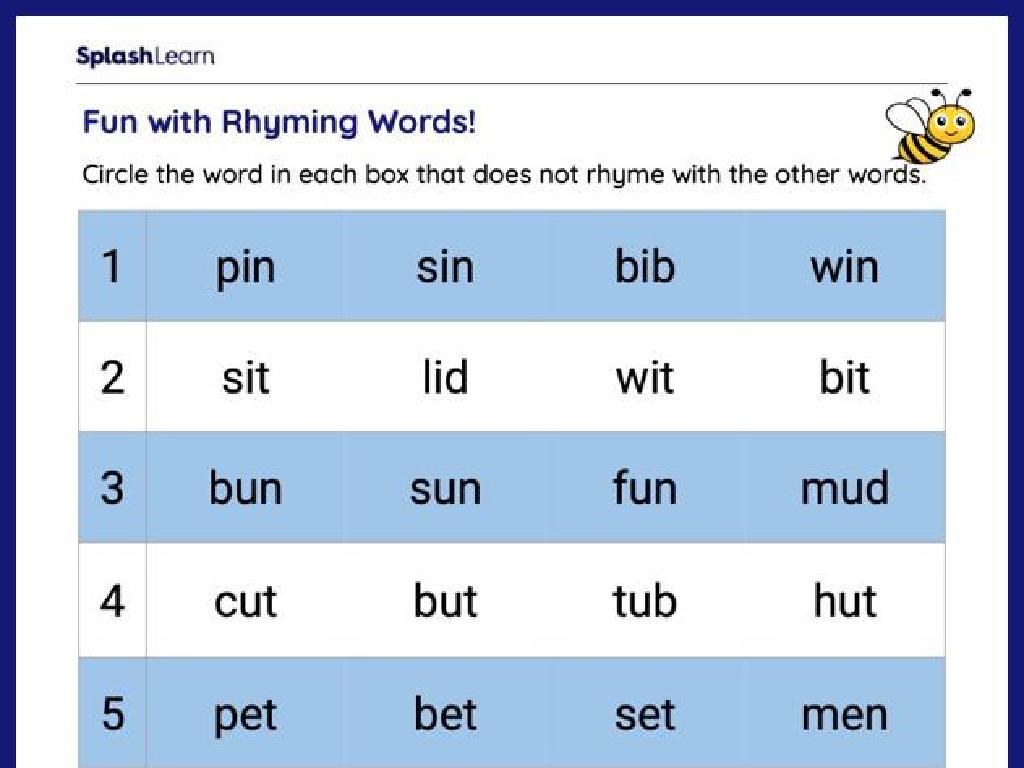Identify The Narrative Point Of View
Subject: Language arts
Grade: Eighth grade
Topic: Point Of View
Please LOG IN to download the presentation. Access is available to registered users only.
View More Content
Understanding Narrative Point of View
– Define narrative point of view
– The perspective from which a story is told
– Significance in storytelling
– Shapes how readers experience the story
– Types of narrative points of view
– First-person, second-person, third-person
– Activities to recognize POV
– Analyze excerpts to determine POV
|
This slide introduces the concept of narrative point of view, which is crucial for students to understand as it affects how they perceive and interpret stories. Begin by defining the narrative point of view and discuss how it influences the reader’s connection with the characters and the plot. Highlight the importance of point of view in storytelling, as it can change the tone and depth of the narrative. Review the different types of narrative points of view: first-person, second-person, and third-person, providing examples for each. Conclude with an activity where students will analyze text excerpts to identify the point of view used, reinforcing their understanding of the lesson’s content.
Exploring Narrative Point of View
– Define narrative point of view
– The perspective from which a story is told
– Role of the narrator
– Narrators can be characters or outside observers
– Point of view in literature
– First-person, second-person, third-person views
– Examples from popular texts
– ‘To Kill a Mockingbird’ uses first-person; ‘The Giver’ uses third-person
|
This slide introduces the concept of narrative point of view, which is crucial for understanding how a story is conveyed to the reader. The point of view affects the reader’s connection to the story and characters. It’s important to discuss the different types of narrators: those who are characters in the story and those who are not. Provide examples of different points of view, such as first-person, second-person, and third-person, and how they change the storytelling. Use well-known literature to illustrate these points, like ‘To Kill a Mockingbird’ for first-person perspective and ‘The Giver’ for third-person perspective. Encourage students to think about how the story might change if told from a different point of view.
Exploring Narrative Points of View
– First-Person Point of View
– Narrator participates in the story (I, me, my)
– Second-Person Point of View
– Directly addresses the reader (you, your)
– Third-Person Point of View
– Narrator is outside the story (he, she, they)
– Varieties of Third-Person
– Omniscient, Limited, and Objective perspectives
|
This slide introduces students to the concept of narrative point of view, an essential element of storytelling and literature. First-person point of view involves the narrator being a character within the story, offering a personal perspective. Second-person, less common, directly addresses the reader, creating an immersive experience. Third-person point of view provides a more detached perspective, with the narrator outside the story. Within third-person, we have omniscient (all-knowing narrator), limited (focus on one character), and objective (reporting without internal thoughts). Encourage students to identify these points of view in books they are reading or have read. Provide examples from well-known literature to illustrate each point of view.
Exploring First-Person Point of View
– Characteristics of First-Person POV
– Narrator is part of the story, uses ‘I’ or ‘we’
– Pros and Cons of First-Person POV
– Creates intimacy but limits perspective
– Identifying First-Person POV
– Look for personal pronouns to spot it in texts
– Practice with First-Person POV
|
This slide introduces students to the first-person narrative point of view. Emphasize that in first-person POV, the narrator is a character within the story, often the protagonist, who speaks directly to the reader using ‘I’ or ‘we.’ Discuss how this POV can create a sense of closeness and immediacy but may also limit the reader’s understanding to only the narrator’s experiences and thoughts. Teach students to identify this POV by looking for personal pronouns and the narrator’s direct involvement in the events. Include practice examples where students can apply their knowledge by identifying the POV in various texts. Encourage discussion about how the first-person POV affects their engagement with the story and their perception of the characters.
Exploring Second-Person Point of View
– Define Second-Person POV
– Narrator addresses the reader directly using ‘you’
– Involvement of the reader
– Creates an immersive experience for the reader
– Recognize usage in texts
– Common in DIY guides, choose-your-own-adventure books
– Analyze examples
– ‘You turn the corner and come face to face with your fears.’
|
This slide aims to introduce students to the second-person narrative point of view, which is less common in literature but offers a unique way for writers to engage their audience. By directly addressing the reader as ‘you,’ the author can create a sense of immediacy and involvement. It’s often used in interactive texts where the reader is a character in the story, such as in recipes, manuals, or gamebooks. Discuss how this POV can affect the reader’s experience and ask students to find examples of second-person POV in their favorite interactive media or books. Encourage them to consider how it changes their perspective as readers.
Exploring Third-Person Point of View
– Variations of Third-Person POV
– Third-person POV includes omniscient, limited, and objective perspectives.
– Assessing Narrator’s Knowledge
– Is the narrator all-knowing or do they have limited information?
– Omniscient vs. Limited POV
– Omniscient knows all about every character; limited focuses on one.
– Impact on Storytelling
– The choice of POV affects how much the reader knows and feels.
|
This slide delves into the third-person narrative perspective, which is not from the viewpoint of a character within the story. Students should learn about the variations: omniscient, where the narrator knows everything about all characters; limited, where the narrator only knows about one character; and objective, where the narrator reports without inner thoughts. Discuss how the narrator’s knowledge level influences the reader’s connection to the characters and the overall narrative. Compare and contrast omniscient and limited POVs with examples from literature. Highlight how the author’s choice of POV can manipulate the reader’s engagement and understanding of the story. Encourage students to consider how different POVs might change their perception of a familiar story.
Identifying Narrative Point of View
– Clues for determining POV
– Look for pronouns and narrative structure
– Practice with passage examples
– Analyze passages to identify the narrator’s perspective
– Group discussion activity
– Share insights and learn from peers
– Understanding different POVs
|
This slide is aimed at helping students identify the narrative point of view (POV) in literature. Start by explaining how pronouns and the structure of the narrative can provide clues to the POV, whether it’s first person, second person, or third person. During practice, students will analyze selected passages to determine the POV, enhancing their critical reading skills. The group discussion will allow students to share their insights and understandings, facilitating peer learning. Emphasize the importance of recognizing different POVs to fully grasp how a story is told and how it affects the reader’s experience. Provide examples of texts with varying POVs for the group discussion to make the activity engaging and comprehensive.
Exploring Narrative Point of View
– Practice POV with writing prompts
– Rewrite a scene from various POVs
– Change a story scene to first, second, or third person to see how it shifts the reader’s experience.
– Share and discuss personal examples
– Each student will present their rewritten scene and discuss the differences.
– Understand POV impact on storytelling
– Discuss how different POVs can change the reader’s connection to the story.
|
This slide is designed to engage students in the practical application of identifying and using different narrative points of view (POV). Begin with writing prompts that encourage students to write short passages in different POVs. Move on to rewriting a familiar scene from a book or a movie from different POVs to help them see how the narrative changes. Encourage students to share their work and discuss how the POV alters the reader’s understanding and emotional response to the story. This exercise will help students grasp the significance of POV in narrative construction and its effect on engagement with the text. Provide guidance and examples for each POV to ensure clarity.
Class Activity: Point of View Workshop
– Break into small groups
– Analyze assigned story excerpts
– Look for pronouns and narrative insights
– Identify the narrative point of view
– Is it first, second, or third person POV?
– Present findings to the class
|
This activity is designed to help students work collaboratively to understand different narrative perspectives. Divide the class into small groups and assign each a different story excerpt. Instruct students to analyze the text, paying close attention to pronouns and narrative style to determine the point of view. Is the story told from a first-person perspective, using ‘I’ or ‘we’? Or is it in second person, speaking directly to the reader as ‘you’, or third person with ‘he’, ‘she’, ‘they’? After the analysis, each group will present their findings, explaining how they identified the point of view. This will help students to not only recognize different points of view but also to appreciate the effect this has on storytelling. Provide guidance on how to present their findings effectively, encouraging clear communication and the use of specific examples from the text.
Wrapping Up: Narrative Point of View
– Recap: What is Narrative POV?
– POV’s Role in Literature
– Understanding POV enhances comprehension and engagement with the text.
– Homework: Craft Your Story
– Write a short story using either first, second, or third-person POV.
– Choose Your Story’s POV Carefully
– The chosen POV should align with the story’s tone and perspective.
|
As we conclude, recap the different types of narrative points of view (POV) – first, second, and third-person. Emphasize how POV influences the reader’s connection to the story and characters. For homework, students will write a short story, selecting an appropriate POV to effectively convey their narrative. This exercise will help them understand the importance of perspective in storytelling and its impact on the reader’s experience. Encourage creativity and thoughtful consideration of how the chosen POV can change the storytelling dynamic. Provide examples of each POV to guide them in their writing.

